
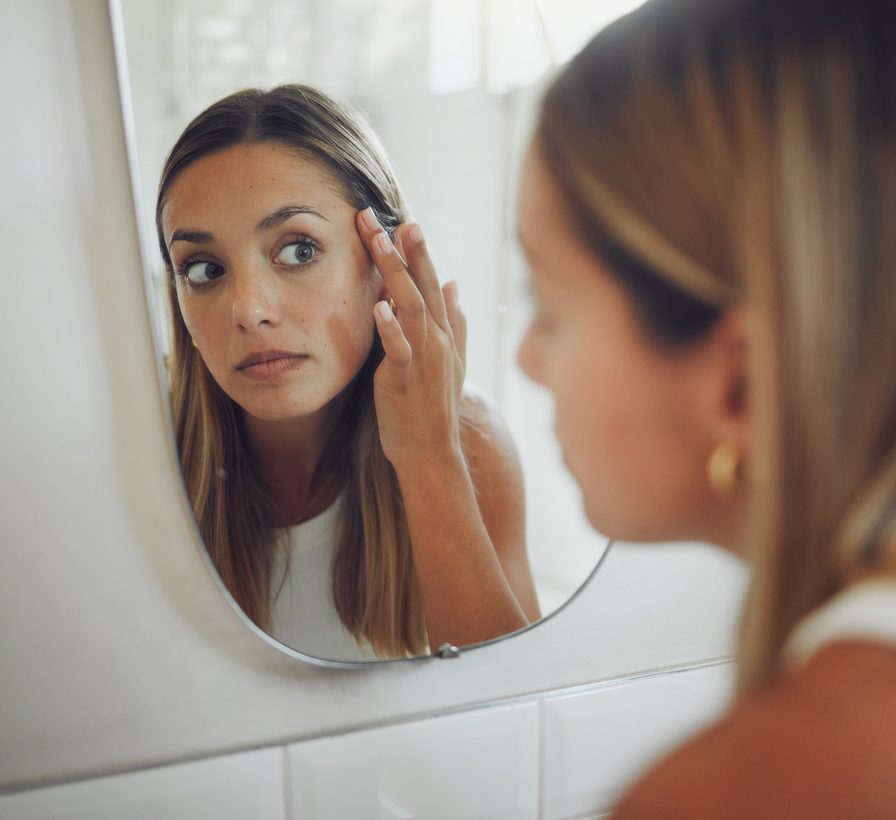
While it’s not possible to permanently shrink your pores, in-clinic treatments can improve their appearance – alongside removing the source of the clogged pore. Our treatments improve pore size by addressing the causes such as eliminating dead skin cells, debris and bacteria, regulating oil production and repairing the skin’s barrier function. We’ll usually perform extraction as part of any treatment to safely remove the blockage.
This is a new injectable treatment that works to not only give you glowing skin, but also to tighten the pores and boost collagen.
Inspired by our Aesthetic Doctor Dr Ivy’s years of aesthetic experience in Asia – where the concept of glass skin was first invented – 111GlassSkin is a combination of injectable treatments to target the signs of ageing, soften the appearance of pores and texture, hydrate the skin from within and give your skin a new lease of life.
Oily skin is a skin type which means that your skin is looking shiny because of excess sebum production – this is often not desired by our patients who look for ways to reduce the appearance of oily skin.
Glass skin on the other hand, is when your skin naturally emanates light – you’ll visibly be glowing and your skin will be hydrated and refreshed from outside and inside.
The process begins with a friendly consultation with our Head of Non-Surgical Department. During this time they will discuss your reason for treatment, your concern and analyse the desired treatment area to examine if 111GlassSkin is the best skin treatment and course of action for you. You will then meet your Aesthetic Doctor, Dr Ivy.
On the day of the treatment, your Aesthetic Doctor will cleanse the area before administering the micro-injections of Botox, Dermal Filler and Ameela. To minimise any discomfort, they will apply a topical anaesthetic.
The amount used will vary depending on the size of the area and the severity of the concern. You may feel a very slight scratch on the entry sites.
Dr Ivy may inject a lower dosage than initially expected – this protocol enables your aesthetic expert to assess how your muscles react to the treatment and to avoid side effects.
Our glass skin treatment is suitable for anyone looking to visibly enhance their skin’s brilliance, brightness and overall condition.
It is perfect for those who are showing the signs of ageing and are wanting to look naturally younger.
In our 111GlassSkin treatment, it works in three ways: targeting lines, dryness and lack of volume.
The Botox prevents the worsening of wrinkles and lines by targeting the underlying muscle that wrinkles the overlying skin. It restricts the contraction of the muscle, so the overlying skin appears smoother.
The Ameela in 111GlassSkin works to lift and nourish the skin from within as well working to brighten dark under-eyes and enhance activity of hyaluronic acid. There are a plethora of regenerating benefits associated with Ameela which is why it’s our Vogue-featured treatment.
The Dermal Filler used during the treatment targets lack of volume – one common ageing concern we see a lot of in our clinic. As well as treating anti-ageing concerns, Dermal Fillers are also great for facial contouring, balancing the face and increasing hydration levels in the skin.
The best thing about 111GlassSkin is that improvements can be seen in minutes!
Ameela can give the skin a lift in around two minutes and the Dermal Filler also works almost immediately – giving you double volume in one session.
For the Botox, you can usually see muscle contraction in around two weeks. This can depend on how sensitive your muscles are although.
The permanency varies from patient to patient, but usually, the Botox starts to wear off first in around 3 months (again this can depend on certain individual factors like the strength of the muscles).
Ameela (formerly known as Nucleadyn) can stay in the skin for around 6-8 months, and Dermal Fillers can last for up to a year!
Immediately after the treatment there can be some swelling and redness but this should not affect your day-to-day activities too much!
Depending on the area, you can usually achieve the desired aesthetic outcome within one treatment, but this varies from patient-to-patient.
Maintenance treatments are required.
You may desire to repeat the treatment when you see your aesthetic concerns returning. For wrinkles, this may be every three-six months.
This treatment will take under an hour.
Each patient’s pain threshold varies, but generally, most patients don’t find this treatment painful. You may feel a slight sting as the needle enters the skin, however, we can apply numbing cream to minimise this.
During your consolation, we will discuss the associated risks and side effects with you during your consultation. Some risks include:
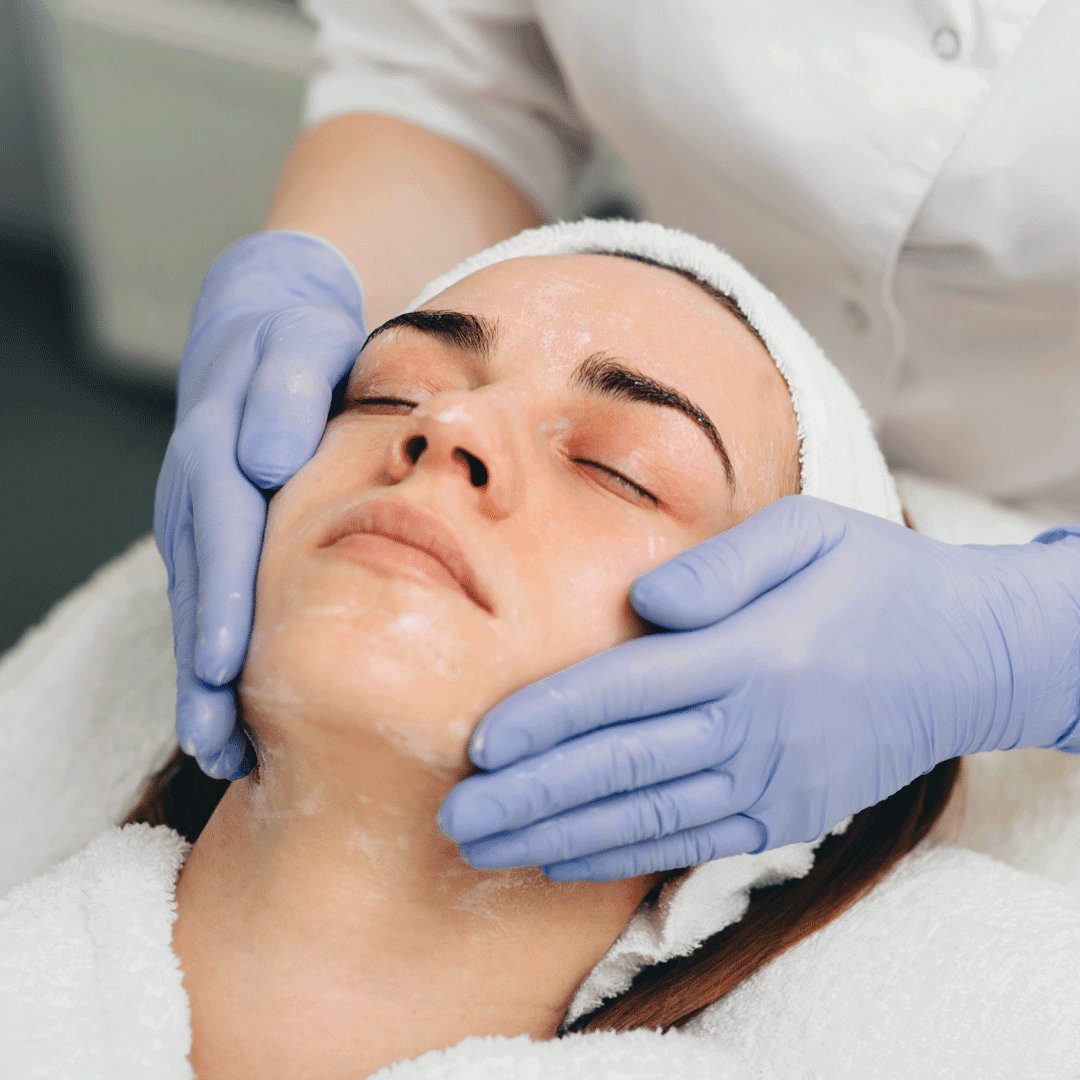
A chemical skin peel often contains essential acids that bring blockages to the surface and eliminate excess oils. Peels that contain BHA’s (beta-hydroxy acids) are particularly beneficial to those with oily or combination skin types as they are oil soluble. The acids work to dissolve the source of the clogged pores, reducing the risk of pore enlargement. Certain skin peels will also kill the bacteria and prevent the comedones from spreading further in a preventative approach.
The treatment begins with a consultation where your practitioner will assess your skin to decipher your skin conditions and the best course of treatment.
Certain peels like Cosmelan or Enerpeel may require skin preparation with the use of at-home products in the lead up to your appointment. Your practitioner will prescribe a list of recommended products that will be suitable for you or provide you with the appropriate preparation kit.
If we’re treating you with a Cosmelan peel, we’ll require you to use a prepping de-pigmentation kit before your initial treatment to prepare your skin for the peel.
During your treatment, your practitioner will double cleanse and prepare the skin by applying a barrier cream around sensitive areas and remove all sebum to aid penetration of the acids.
Following this, we will apply the peel of choice and leave it on for a few minutes before neutralising or removing the peel. A neutraliser will prevent the acid from working on the skin, whereas a removal wipe will leave the acid active on the skin to continue improving the complexion following treatment.
Chemical skin peels are suitable for anyone who is looking for overall skin rejuvenation and an improvement in skin tone and texture. Or, those who have:
The duration of the treatment will depend on your custom needs. Some peels may be left on for longer, depending on your needs and tolerance to treatment. Typically, it’ll take around 30 minutes.
Chemical skin peels vary in strength and substance and are either superficial, medium or deep depending on your skin concerns and skin type.
The acids and other active compounds react with the skin and dissolve the outermost layers of the skin to reveal a fresher, clearer and brighter complexion. Chemical skin peels also promote collagen and elastin growth that will encourage the growth of healthier skin.
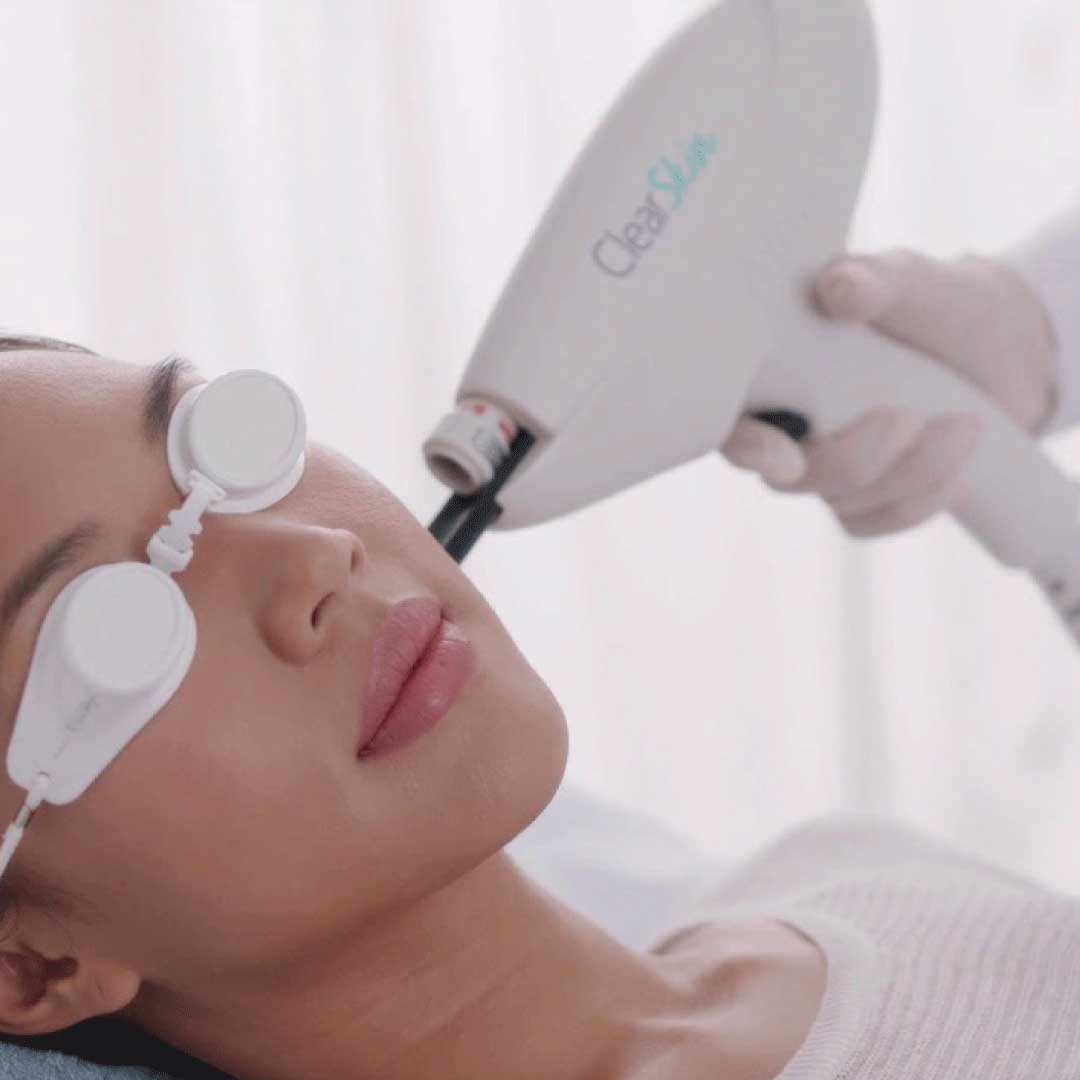
Clearskin gently vacuums the pore-clogging substances from the large or open pore. With a reduction in bacteria and removing the congestion, the risk of damage to the pores decreases. Meanwhile, the laser stimulates collagen production to regenerate damaged skin.
The treatment will start with a consultation where we will discuss your treatment goals and determine the type and severity of your acne. Based on the assessment, we will devise a custom acne programme.
During the treatment, the nurse will use a hand-held device to make passes over the skin-this will follow with a gentle vacuum.
This treatment is suitable for all skin types. Clearskin works well for those who have acne-prone, or oily skin and large pores. We use this treatment for those with active acne and can treat acne scarring, but for those who no longer have acne and are looking to treat their scarring alone, they may benefit more so from iPixel.
Approximately 30 minutes.
The treatment addresses three primary causes of acne, including excess oils, dead skin cells (which block the pores and can stretch their lining) and bacteria. The laser penetrates and targets bacteria while minimising oil-producing activity. It’s a non-ablative laser and heats the dermal layer beneath the skin without damaging it.
Meanwhile, on the surface of the skin, the built-in vacuum technology sucks the debris, oils and dead skin cells from the pores. Due to ClearSkin’s collagen stimulating properties, it’s a treatment that is effective in reducing acne scarring too.
The ablative laser treatment can reduce and tighten pore size by resurfacing the skin in a process that gives a healthier and smoother skin surface.
Your consultation will determine your suitability for treatment.
The nurse will apply a numbing cream to minimise discomfort during treatment. We will configure the depth depending on the area and concern, and the device will make a few passes over your skin, delivering bursts of energy.
After the iPixel treatment, you may notice square formations with tiny pinprick dots on the skin. The nurse will apply a topical serum to minimise these marks.
The fractional ablative laser treatment delivers precise beams of energy in a pixel-size formation to target specific cells. The surrounding cells remain intact, which speeds up healing. The heat from the energy destroys the injured or damaged cells and stimulates collagen production to remodel and fill in the area with new healthy cells.
Most patients require 4-8 sessions. One session every 4-6 weeks depending on the severity of the skin concern.
Numbing cream is applied for 20 minutes, followed by the treatment, which takes approximately 30 minutes.
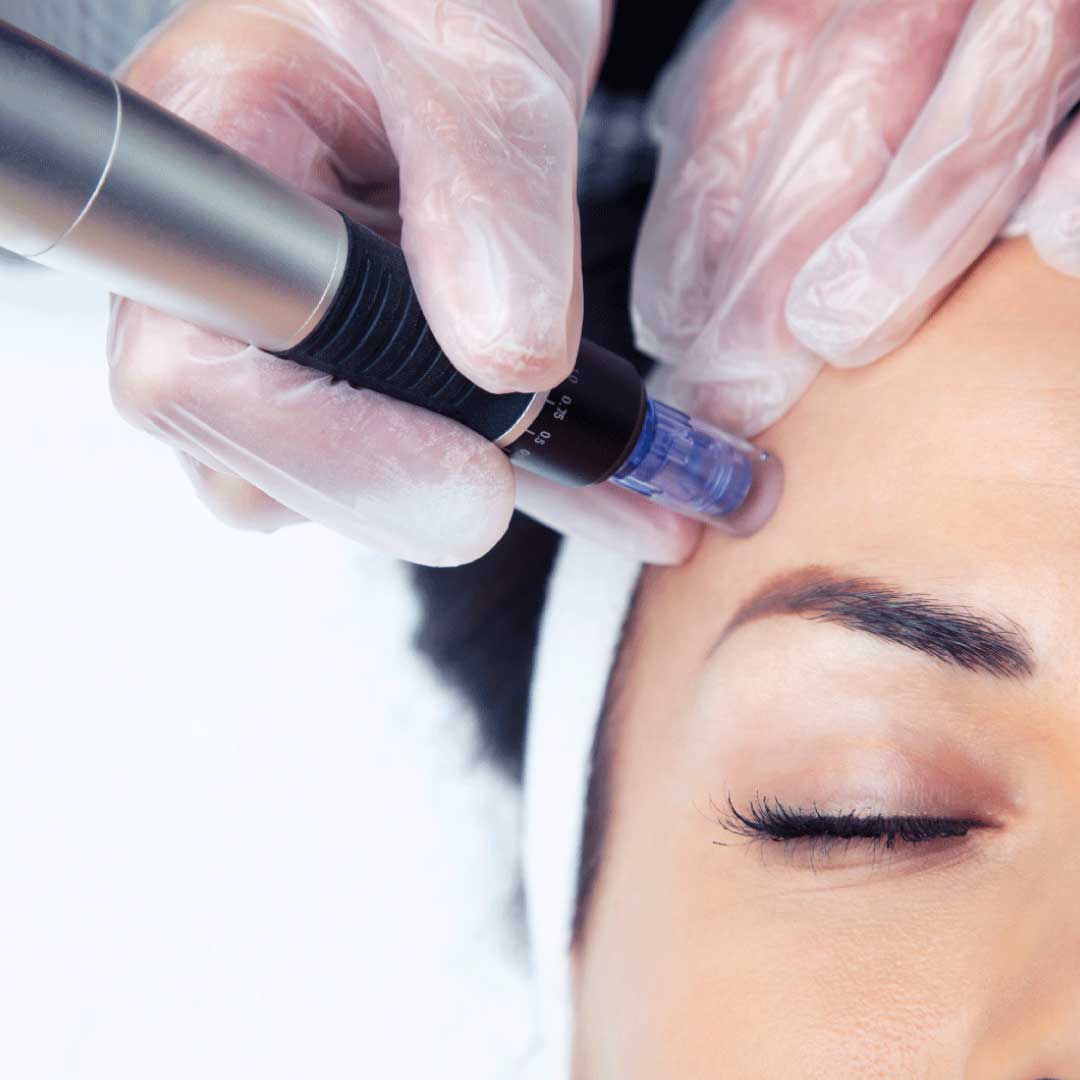
The microneedling treatment resurfaces the skin through igniting collagen and elasticity production to improve overall skin tone and quality. In combination with PRP, the body’s healing processes ignite with a boost in fibroblast activity to enhance suppleness and softness of the skin.
The Dermapen treatment usually begins with the application of a topical numbing cream. Using a hand-held pen-like device, the nurse will then make several passes over the entire face.
The collagen inducing Dermapen creates virtually invisible micro-injuries in the skin that ignite the body’s healing and regenerative processes. This influx of collagen and elastin and release of growth factors results in an improvement of overall skin smoothness, suppleness, and strength.
Additionally, the micro-channels allow for optimal absorption of active ingredients to enhance their results and increase their efficiency.
Immediately after the treatment, you may notice tiny pinpricks of blood. The nurse will usually pat the face down after which point; the skin will no longer draw blood.
Your skin may be red for up to 24 hours and will gradually resolve throughout the following week. It may also feel a little rough, warm and dry for the first couple of days after your treatment and may begin to flake.
We recommend 4-6 treatment sessions. Every four weeks.
Please note, all consultations are subject to the applicable consultation change or deposit.


In-clinic OR Virtual Consultation
Refundable £50 deposit required to secure your complimentary
consultation, redeemable against treatment
To request a consultation, please complete this form.
In-clinic OR Virtual Consultation
Refundable £50 deposit required to secure your complimentary
consultation, redeemable against treatment
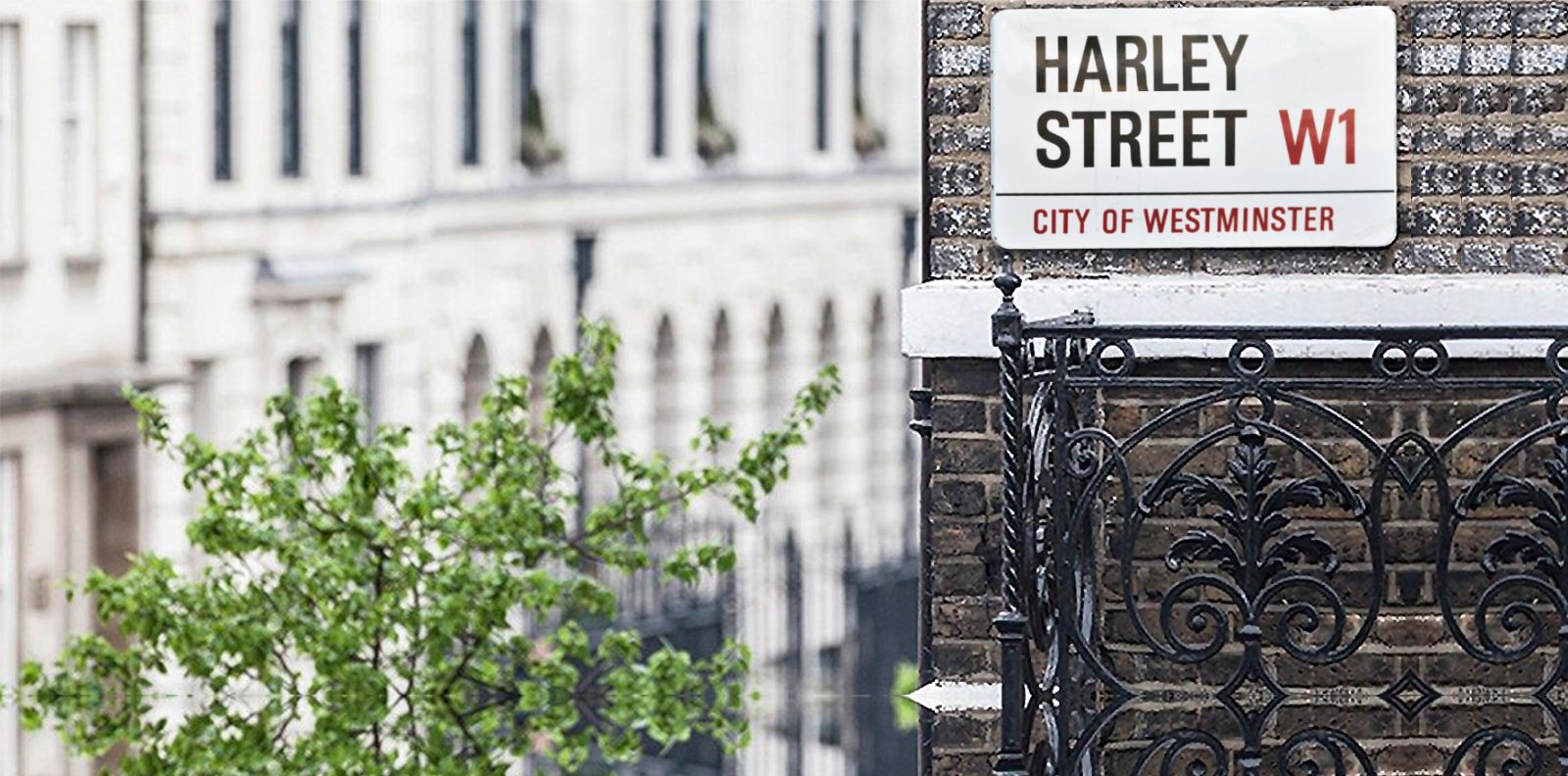
My pores are non-visible now after the Potenza package with Violeta! So happy with the results and will be coming back for more treatments
RunanThis is the best treatment to get wedding ready! It has worked on my large pores and brightened my eyes up. THANK YOU
WilliamsWhat a transformation. These Chemical Peels make my skin so fresh and pore-free. Definitely recommended to people with oily or large pores.
JoyHaving treatments with Samia to clear my skin and improve the pores. Very happy so far, I am starting to do microneedling to help brighten and give my skin a glow.
ChristineWe'd love your feedback! Please leave a review on our website and Trustpilot